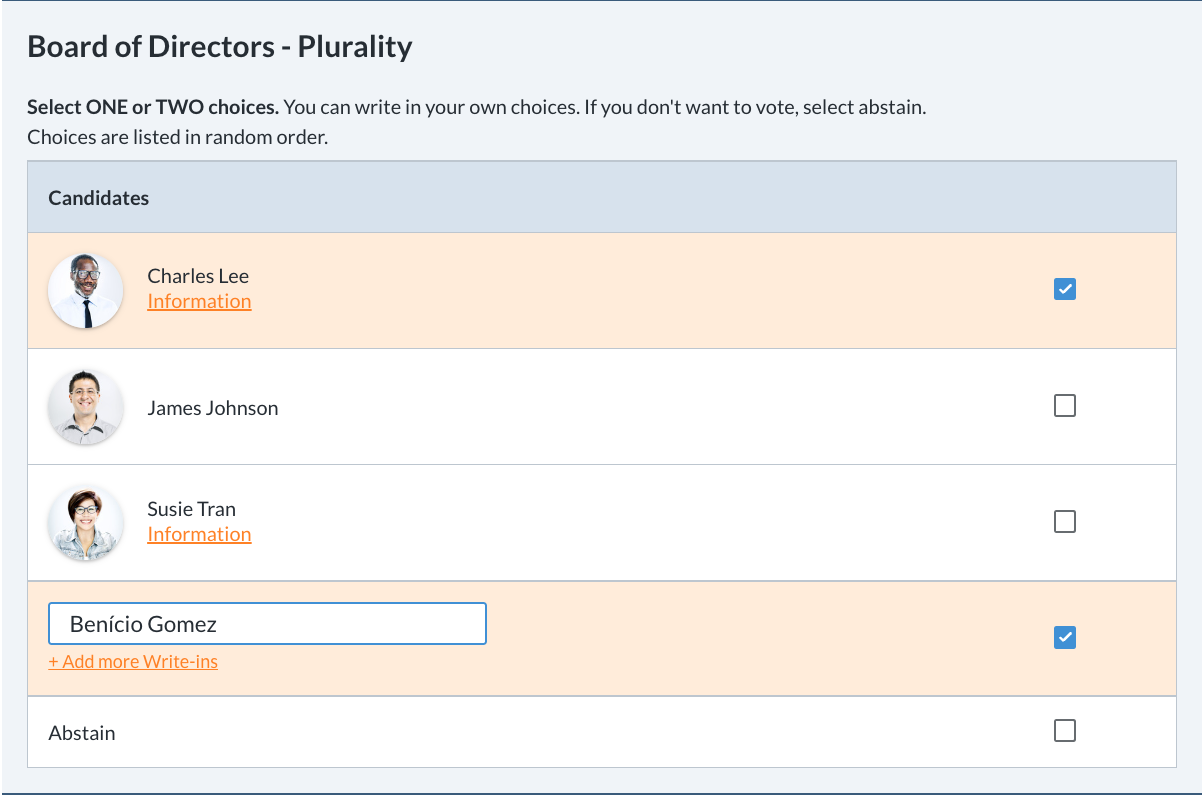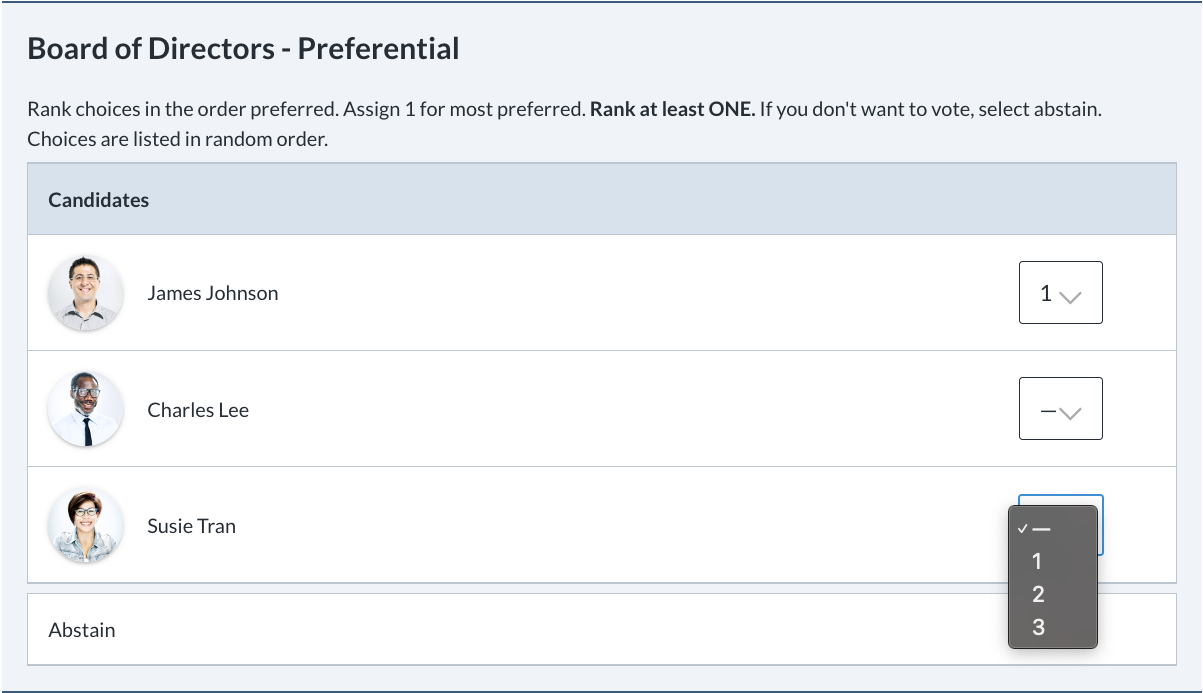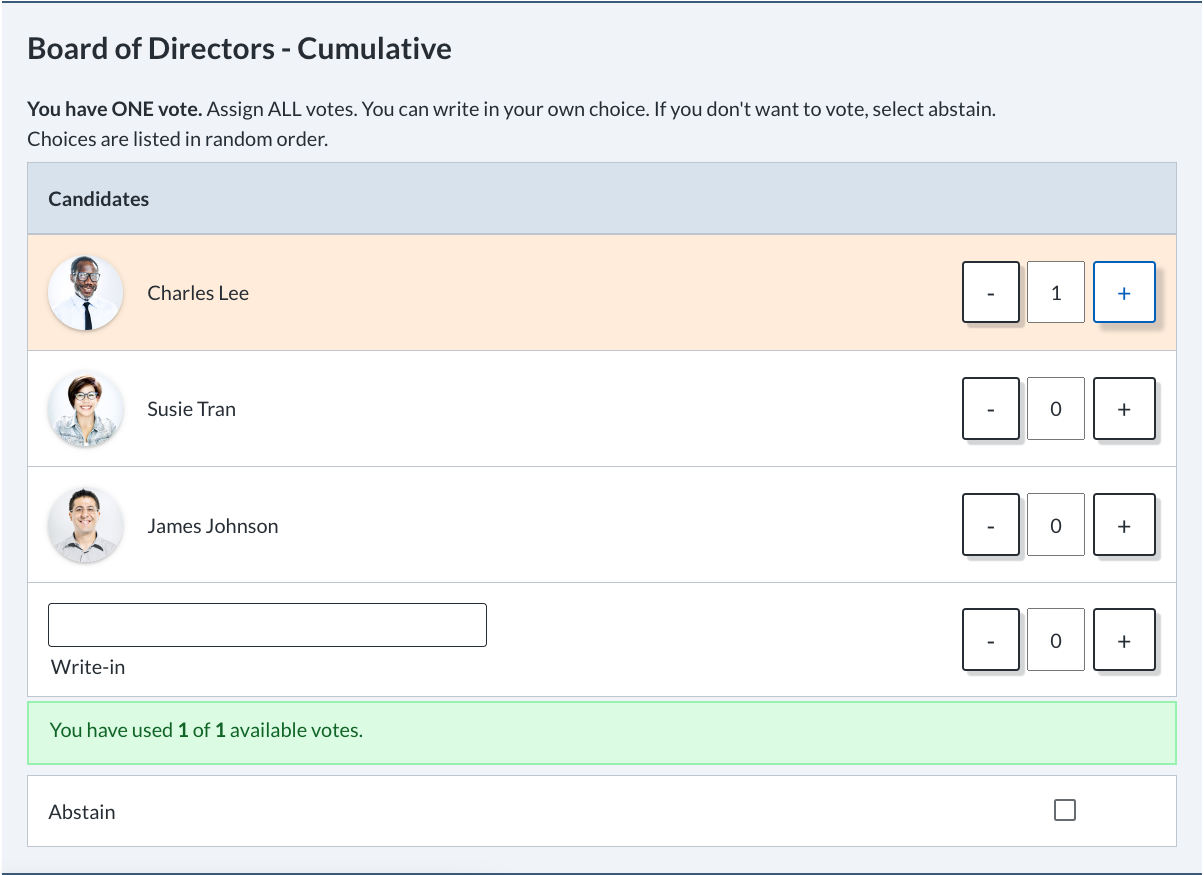
In the above example, ElectionBuddy announces candidates with the most votes as winners. Write-ins can be included, and voters can choose to abstain. ElectionBuddy results can be tallied allowing a majority result to be announced. The number of people elected will depend on the size of the board and the number of seats that are up for election. Other voting methods are available to select multiple board members, including Ranked-Choice ballots in a preferential election or Split Voting.
Ranked choice ballots where multiple positions are selected ensure that every vote counts as voters indicate all their preferences for candidates appearing on the ballot. This is also known as Preferential Voting.

Cumulative voting ballots are where votes can be split amongst candidates to allow voters to delegate their votes to multiple candidates. This is required in certain states including California.

The cumulative voting method allows voters to provide a more accurate degree of preference for the board member and is similar to Preferential Voting from that perspective. Voters cast more than one vote for any candidate that they prefer and minimize or provide zero votes to those that they do not wish to be representing the organization at the board level. ElectionBuddy will still pick multiple winners even if a voter can choose to vote for only one candidate, by counting the individual votes per candidate, using a Plurality Voting tally.